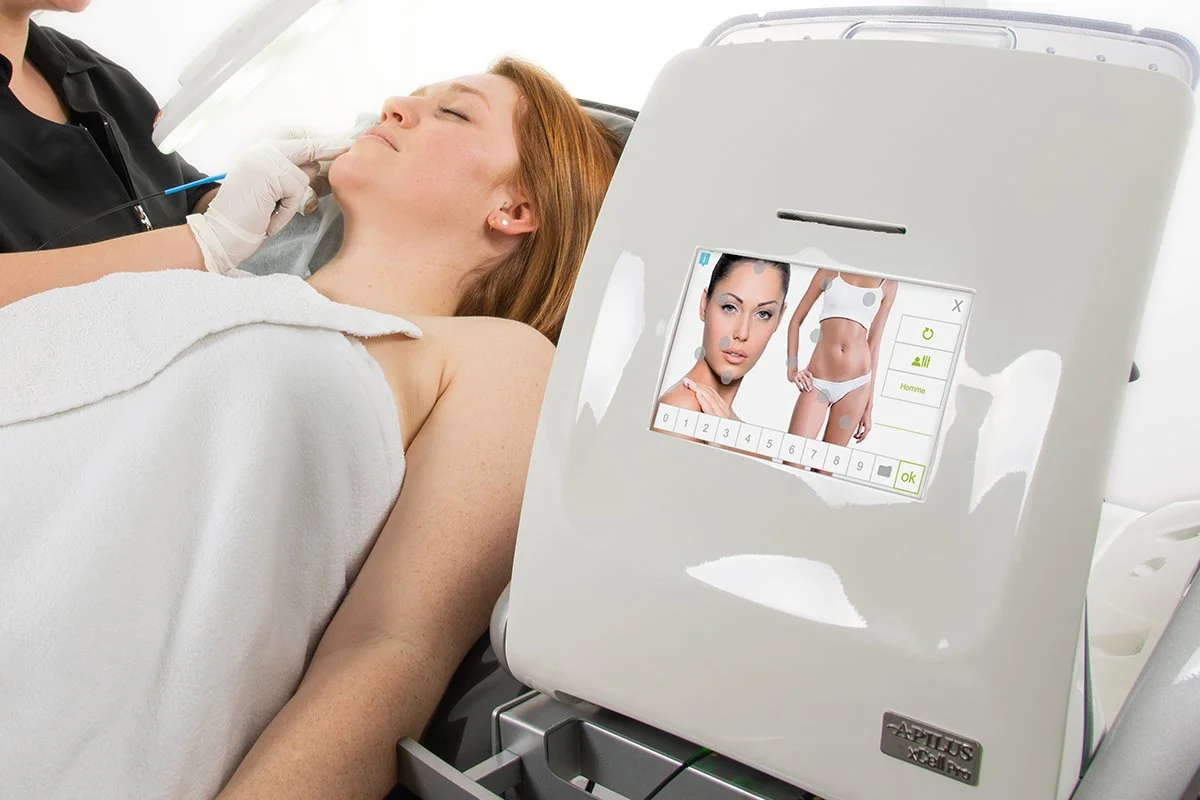
Frequently Asked Questions
Electrolysis
Why should I choose electrolysis over other types of hair removal?
All other temporary methods such as tweezing, shaving or waxing, require frequent time-consuming maintenance. Skin irritations, ingrown hairs, discoloration and scarring may result. These methods may contribute to an increase in hair growth activity. While there are many reasons like these to choose electrolysis over other temporary methods, there is one reason why electrolysis stands above all the others: PERMANENCE!
Why is laser hair removal not permanent?
To date there is no statistical evidence that laser hair removal is permanent. Although, with use of the laser, hair may not grow within many months from the time of the treatment, it serves only as a prolonged temporary method. There have also been numerous cases reported of skin discoloring especially among darker skinned individuals as well as scarring. The lighter hair can not be removed with laser, because it cannot be seen by the laser light, only the darker hairs can.
Several laser manufacturers received FDA permission to claim "permanent reduction", but not "permanent removal." This means that although laser treatments will reduce the total number of body hairs, they will not result in a permanent removal of all hair.
We do a lot of after laser cleanups by removing hairs that were not affected by laser light or hairs that are growing back.
Does electrolysis hurt?
Electrolysis is a comfortable treatment but we know pain is subjective to everyone. It is impossible to destroy hair growth without some sensation and what you experience may vary depending on the area of skin since some parts of the body are more sensitive. It is often described like a gradually building warmth, a pinch, or a brief sting. The upper lip is the most sensitive for many because the skin is most thin there and getting a treatment during your menstrual cycle may make your skin more sensitive.
In most cases you don’t need any numbing creams but we do make them available. We use the Apilus equipment because it gives your electrologist more adjustments that they can use to make you more comfortable.
What areas can be treated?
Any area of the body except inside the ears and nostrils.
Female Commonly Treated Areas
Genetics and medications may cause excess hair on the face and body in areas such as the chest, breasts, and abdomen.
The most commonly treated areas for women are:
Chin
Jawline
Upper lip
Throat
Sides of the face
Eyebrows
Chest
Abdomen
Breasts
Bikini lines
Underarms
Hairline
Fingers and toes
Male Commonly Treated Area
The most commonly treated areas for men are:
Back (including shoulders and torso)
Ears – Brows – Cheeks (to clean up beard line)
Neckline
Nape
Back (including shoulders and torso)
How long will it take?
The word "permanent" should not be confused with "immediate.” For permanent hair removal, a series of treatments is required over a period of time. Weekly or bi-weekly sessions are the most effective determined by area size and an amount of hairs.
With every treatment, clients will notice the hair becoming finer, lighter in color and taking longer to re-grow. Visits becoming shorter in duration and spaced further apart. On your first visit you are advised of the overall length of time you will be in treatment. Most of our clients have permanent results after 25-30 visits within 1 year.
Who can get electrolysis treatments?
Electrolysis is a safe and the only permanent hair removal service that can be applied to anyone, except for anyone who wears a pacemaker or has a contagious skin condition.
Can electrolysis be done while pregnant?
Electrolysis can be performed during pregnancy, but we suggest that you seek the advice of your physician during the last 3 months. If you choose to have electrolysis, the breasts should be avoided in the last trimester, especially if you’re going to breastfeed. In the final weeks of pregnancy, you should avoid the abdomen because it is very sensitive and would be very uncomfortable for you at this point in the pregnancy.
There are two types of current used in electrolysis, thermolysis and galvanic. Thermolysis is referred to as short wave. Thermolysis does not flow through the body and has not been found to be harmful to pregnant women or the fetus. Galvanic electrolysis sends an electrical current through the client and back to the device. This is not recommended because the baby is surrounded by amniotic fluid. In this situation, amniotic fluid acts as a conductor of electricity. For this reason, galvanic current is NOT recommended for electrolysis during pregnancy.
MY Skin Care Center uses the thermolysis method.
What is the difference in doing eyebrows with electrolysis vs laser?
Because radiation can damage the eyes, people should not have work done on their eyebrows via laser. Laser hair removal should not be performed on eyebrow region, because the risks and side effects include: iris atrophy and posterior synechiae, iris damage and acute pigmentation, irreversible cataract, or inflammation of the interior eye.
Electrolysis is the ONLY safe method recommended by the FDA in working near the eyes.
What do I do about hairs between appointments?
Do not pluck, shave or wax!!! After initial treatment there may be some hair remaining that was not removed, either due to the time constraints or because some hairs were not out at that time. Just trim the hair with a pair of small scissors, making sure to allow enough time for the hair to grow a bit prior to your next appointment. What is not seen - cannot be treated. Bleaching is fine as long as you bleach the hair a week before the appointment.
Is electrolysis for teenagers?
Regardless of the selected hair removal mode, the most important thing is for teenagers to feel good about themselves. And teenagers are often first in line when it comes to removing unwanted hair. The question in the minds of many parents is: at what age should we allow teenagers to begin hair removal, and which method is best? There is no ideal age to begin hair removal; the best course of action is to discuss the subject openly with teenagers before they pick up a razor in the bathroom and shave all unwanted hair with unfortunate consequences.
Teenage hair is often quite fine and barely pigmented. Because electrolysis is safe and effective for all skin and hair types it is the ideal hair removal method to give rid of unwanted hair for life. Particularly in the facial area, electrolysis is the method of choice for young women, because unlike laser, there is no need to shave the face prior to treatment.
With our state-of-the-art electrolysis equipment, we can offer teenagers highly effective treatments with hardly any feeling. There are even insulated probes that can protect the skin surface while providing extra comfort and effectiveness.
Do you treat men?
Yes, we do. We reshape men’s eyebrows. We also remove hairs from the following areas: across the bridge of the nose, upper cheeks, ears, shoulders. The throat hairline can be permanently raised to relieve the irritation at the collar line that bothers many men.
We do not treat men below the waist area.
Electrolysis for PCOS?
We are licensed electrologists who specialize in successfully treating clients with Polycystic Ovarian Syndrome (PCOS) and endocrine disorders that cause unwanted hair problems. We want all women with PCOS and other endocrine disorders to be aware that their unwanted hair problems are easily treatable and not hopeless. Through their doctor’s referral, many PCOS clients have attained tremendous results and emotional well-being and self-esteem.
What is PCOS ? It is a genetic hormonal disorder. PCOS symptoms occur because of the body’s inability to process insulin correctly, creating an excess of insulin and glucose in the body. This results in an imbalance with other hormones so the body produces more male hormones, preventing ovulation.
The most common symptom of PCOS is excess facial and/or body hair growth. PCOS has four main features:
skin and hair changes related to testosterone ( oily skin, acne, loss of scalp hair ).
irregular periods, and sometimes, difficulty becoming pregnant
problems with weight
metabolic abnormalities, principally high insulin levels
PCOS affects each woman differently and a useful resource is www.pcosupport.org where you can get more information or take a quiz to determine if you have PCOS.
Is it safe to perform electrolysis on a localized area of the body infected by the herpes simplex virus?
Not recommended. There is a high risk that the blisters may burst. The infection would then spread and form scabs. After the infected area has healed, wait at least two weeks before performing electrolysis treatments. The heat could otherwise stimulate the latent virus for a short time.
𝗪𝐡𝐚𝐭 𝐞𝐪𝐮𝐢𝐩𝐦𝐞𝐧𝐭 𝐝𝐨 𝐰𝐞 𝐮𝐬𝐞 𝐟𝐨𝐫 𝐞𝐥𝐞𝐜𝐭𝐫𝐨𝐥𝐲𝐬𝐢𝐬 𝐭𝐫𝐞𝐚𝐭𝐦𝐞𝐧𝐭𝐬?
The Apilus xCell is a device with exceptional intelligence. It's a new standard in the field of 100% permanent hair removal by raising the efficiency, speed, and comfort
𝐅𝐚𝐬𝐭𝐞𝐫 𝐑𝐞𝐬𝐮𝐥𝐭𝐬 : 6 times faster than that of other hair removal devices, producing permanent results much more quickly on all hair types.
𝐈𝐧𝐜𝐫𝐞𝐚𝐬𝐞𝐝 𝐏𝐨𝐰𝐞𝐫 : The Apilus xCell delivers 35% more power. This increase in power enables faster coagulation, resulting in enhanced comfort and treatment effectiveness.
𝐄𝐱𝐜𝐞𝐩𝐭𝐢𝐨𝐧𝐚𝐥 𝐂𝐨𝐦𝐟𝐨𝐫𝐭: Electrolysis treatment is performed so quickly that the sensation is barely noticeable. Mere thousandths of a second are enough to eliminate unwanted hair! The preferred solution for all body areas and types of clients, including the most sensitive ones!
We will be your best allies in achieving 100% permanent hair removal in record time!
Call for a free consultation.


